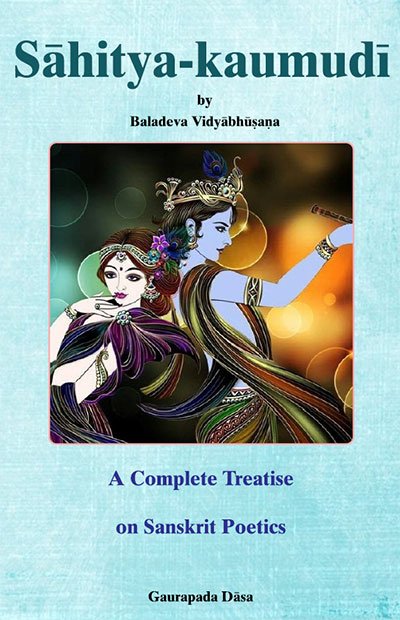Sahitya-kaumudi by Baladeva Vidyabhushana
by Gaurapada Dāsa | 2015 | 234,703 words
Baladeva Vidyabhusana’s Sahitya-kaumudi covers all aspects of poetical theory except the topic of dramaturgy. All the definitions of poetical concepts are taken from Mammata’s Kavya-prakasha, the most authoritative work on Sanskrit poetical rhetoric. Baladeva Vidyabhushana added the eleventh chapter, where he expounds additional ornaments from Visv...
Text 10.220
विसदृश-वस्तु-दर्शनेऽपि केचिद् इच्छन्ति. यथा,
visadṛśa-vastu-darśane'pi kecid icchanti. yathā,
According to some scholars, smaraṇa takes place even when a dissimilar thing is seen. For instance:
śirīṣa-mṛdvī giriṣu prapede yadā yadā duḥkha-śatāni sītā |
tadā tadāsyāḥ sadaneṣu saukhyalakṣāṇi dadhyau galad-aśru rāmaḥ ||
śirīṣa—like a śirīṣa flower; mṛdvī—She who is soft; giriṣu—in the hills; prapede—got; yadā yadā—whenever; duḥkha—of [moments of] unhappiness; śatāni—hundreds; sītā—Sītā; tadā tadā—at those various times; asyāḥ—of hers; sadaneṣu—in the homes; saukhya—of [moments of] happiness; lakṣāṇi—upon the hundreds of thousands; dadhyau—meditated; galat—are trickling; aśru—in such a way that tears; rāmaḥ—Rāma.
Whenever Sītā, tender like a śirīṣa flower, experienced hundreds of hardships in the mountains, Rāma shed a tear while contemplating upon thousands of happy moments she had in her homes. (Sāhitya-darpaṇa 10.27)
